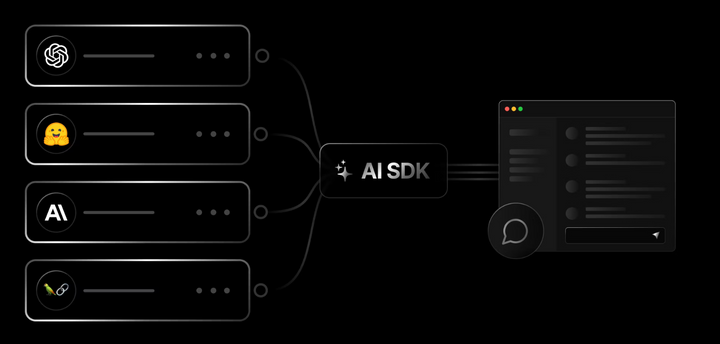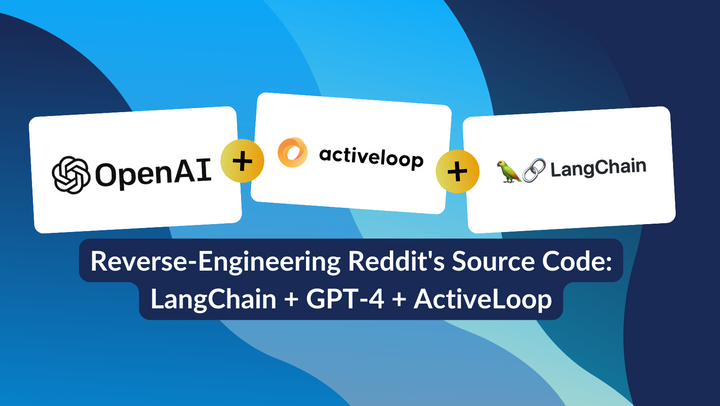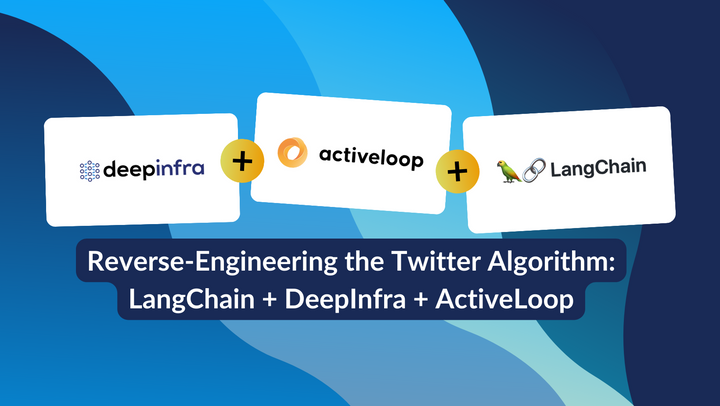Introduction to Stable Diffusion Img2Img: Shaping the Future of Image Generation
Ever gazed at a Van Gogh painting and wished you could recreate that magic with pixels? Or have you marveled at the surrealist landscapes of a sci-fi movie and yearned to bring such visions to life from scratch? If so, welcome aboard! Today, we are delving into the transformative world of Stable Diffusion Img2Img, a technique that weaves together the threads of creativity and technology in some really exciting new ways.
This article will specifically focus on the prebuilt version of Stable Diffusion Img2Img available on Cerebrium as a representative example of how Image-to-Image models work. Cerebrium's main function centers around fine-tuning and deploying machine learning models to serverless GPUs. More information is available in the Cerebrium docs.
Background and Basics of Stable Diffusion
Before we delve into the specifics of Stable Diffusion Img2Img, it's essential to first understand the cornerstone upon which it is built: Diffusion Models. These models have risen to prominence in the field of machine learning due to their innovative way of generating new data.
Diffusion Models: A Primer
To better comprehend what diffusion models do, picture this: imagine dropping a bit of ink into a glass of water. Initially, the ink forms a concentrated blob. But as time passes, it begins to spread out, subtly diffusing throughout the water until the whole glass takes on a homogenous color.
Diffusion models adopt a similar approach, but applied to data. They start with a target dataset (our 'ink') and introduce a form of 'noise' (analogous to the water) to create a diffusion process. This process gradually transforms the data until it resembles random noise. By reversing this process, the models generate new samples that bear the same statistical properties as the original data.
Evolution of Diffusion Models
Diffusion models have come a long way since their inception. They originated from the concept of Markov chains, a mathematical system that undergoes transitions between different states according to certain probabilistic rules.
Over time, these models have evolved, with researchers experimenting with different forms of noise and more complex transformations. This evolution has been driven by the pursuit of better performance and more realistic output, leading us to the present day where we have advanced variations like Stable Diffusion Img2Img.
Stable Diffusion Img2Img: A Leap Forward
Stable Diffusion Img2Img represents a significant leap in the evolution of diffusion models. It doesn't just generate images; it creates images that are stable and consistent, a quality that is highly desirable, especially in fields such as digital art and game development.
But what does it mean for an image to be 'stable'? In the context of Stable Diffusion Img2Img, stability refers to the model's ability to generate images that are not only high-quality but also robust to small changes in the input. This means that even minor variations in the input won't cause major distortions in the output, resulting in more consistent and reliable image generation.
Stable Diffusion Img2Img vs. Other Techniques
When compared with other image generation techniques, Stable Diffusion Img2Img stands out for several reasons:
- Quality: The images generated by Stable Diffusion Img2Img are of exceptional quality. This is due to the model's unique settings that introduce noise and control the reverse of the diffusion process, resulting in images that are rich in detail and that closely resemble the training data.
- Consistency: As mentioned earlier, Stable Diffusion Img2Img generates images that are stable and robust to input changes. This makes it a reliable tool for tasks that require high consistency, such as creating assets for video games or generating training data for other machine-learning models.
- Flexibility: Unlike image generation techniques that require specific types of input data, Stable Diffusion Img2Img is quite flexible. It can work with a wide range of data types and formats, making it a versatile tool for various image-generation tasks.
Key Components of Stable Diffusion Img2Img
Now that we've got a solid understanding of the basics and background of Stable Diffusion Img2Img, it's time to zoom in on the key components that make this technique tick.
Noise Schedule
The first key component we need to talk about is the noise schedule. It's a critical part of Stable Diffusion Img2Img and plays a significant role in the diffusion process.
The noise schedule essentially dictates the amount and type of noise that's introduced at each step of the diffusion process. It's a bit like a conductor leading an orchestra, signaling when each instrument (or in our case, each 'noise') should come in and how loud or soft it should be.
The noise schedule greatly affects the final outcome of the image generation. An aptly set noise schedule ensures that the diffusion process smoothly transitions the data from its original state to a state of random noise and vice versa, contributing to the high-quality, stable images that Stable Diffusion Img2Img is known for.
Denoising Score Matching
The second key component of Stable Diffusion Img2Img is denoising score matching. It's a bit of a mouthful, but its role is straightforward and crucial.
Denoising score matching is a technique used to estimate the probability distribution of the data. It does so by adding a little bit of noise to the data and then trying to remove (or 'denoise') it. The idea is that by learning how to denoise the data, the model can better understand the underlying distribution of the data. This understanding is vital for generating new samples that resemble the original data.
Denoising score matching is a key player in the Stable Diffusion process. It enables the model to accurately reverse the diffusion process, transforming the random noise back into recognizable images. Without it, our diffusion model would be like a car without a reverse gear - able to diffuse the data into noise, but not able to bring it back to its original form.
Diffusion-based Image Generation
The third key component, and indeed the heart of Stable Diffusion Img2Img, is the diffusion-based image generation process itself.
The process starts with the original image data. This data is subjected to a series of transformations - guided by the noise schedule - that gradually morph it into random noise. Once in this state, the model uses denoising score matching to reverse the process, step by step, until it generates a new image. It's a bit like sculpting, but instead of starting with a block of marble and chipping away, we start with a cloud of dust and gradually bring the sculpture to life.
There are several advantages to this approach. Firstly, it can generate high-quality, realistic images that closely resemble the training data. Secondly, it's a very flexible method that can work with a wide range of data types and formats. Lastly, and perhaps most importantly, the images generated are stable and robust to changes in the input, making this a reliable technique for various applications.
Practical Applications of Stable Diffusion Img2Img
Okay, we've spent a lot of time delving into the nuts and bolts of Stable Diffusion Img2Img, but what's it good for? What can we do with it? Let's look at some of its practical applications.
Art and Creative Image Generation
Artists and designers can use Stable Diffusion Img2Img to generate unique and creative images. By feeding the model with specific styles or themes, they can produce a diverse array of artistic renditions. It's like having a digital muse that can endlessly create and inspire.
Data Augmentation for Machine Learning
Stable Diffusion Img2Img can be a powerful tool for data augmentation in machine learning. By generating new images that are similar but not identical to the training data, it can effectively expand the dataset, leading to more robust and accurate models. Think of it as a cloning machine that can produce countless variations of your data.
Medical Imaging and Diagnostics
In the medical field, Stable Diffusion Img2Img can contribute significantly to imaging and diagnostics. For instance, it could generate additional scans or images to aid in the detection of diseases or abnormalities, potentially improving diagnostic accuracy and early detection.
Video Game Development and Virtual Environments
In video game development and virtual environments, Stable Diffusion Img2Img could be used to generate realistic landscapes, characters, and textures. Imagine creating an entire game world with the help of an AI!
Getting Started with Stable Diffusion Img2Img and Cerebrium
Now that you're familiar with the concept and potential applications of Stable Diffusion Img2Img, you might be itching to get your hands dirty and start experimenting. But where do you start?
If you're a novice in this domain, here are some tips:
- Start by understanding the underlying concepts of Stable Diffusion and Diffusion Models in general. You've already started to check this box just by reading this article. Congrats!
- Experiment with prebuilt models available on our platform. Cerebrium offers a Stable Diffusion Img2Img model that you can deploy and play around with just a few clicks.
- The Cerebrium documentation is another great place to start. It provides a comprehensive guide on how to use the framework, including how to deploy prebuilt models and how to optimize your prompts.
Conclusion
Understanding Stable Diffusion Img2Img can be a game-changer in the world of image generation and machine learning. It opens up a whole new world of possibilities.
As for future developments, the field of AI and machine learning is constantly evolving, and there's always something new on the horizon. Who knows what exciting advancements the future holds? All we can do is stay curious, keep learning, and keep pushing the boundaries of what's possible.
So go ahead, take the leap. Dive into the world of Stable Diffusion Img2Img and Cerebrium. Paint with the colors of technology and create your own masterpieces. After all, the world is your canvas, and you are the artist. Happy creating!
Note: This article originally appeared on the Cerebrium blog.
Subscribe or follow me on Twitter for more content like this!




Comments ()